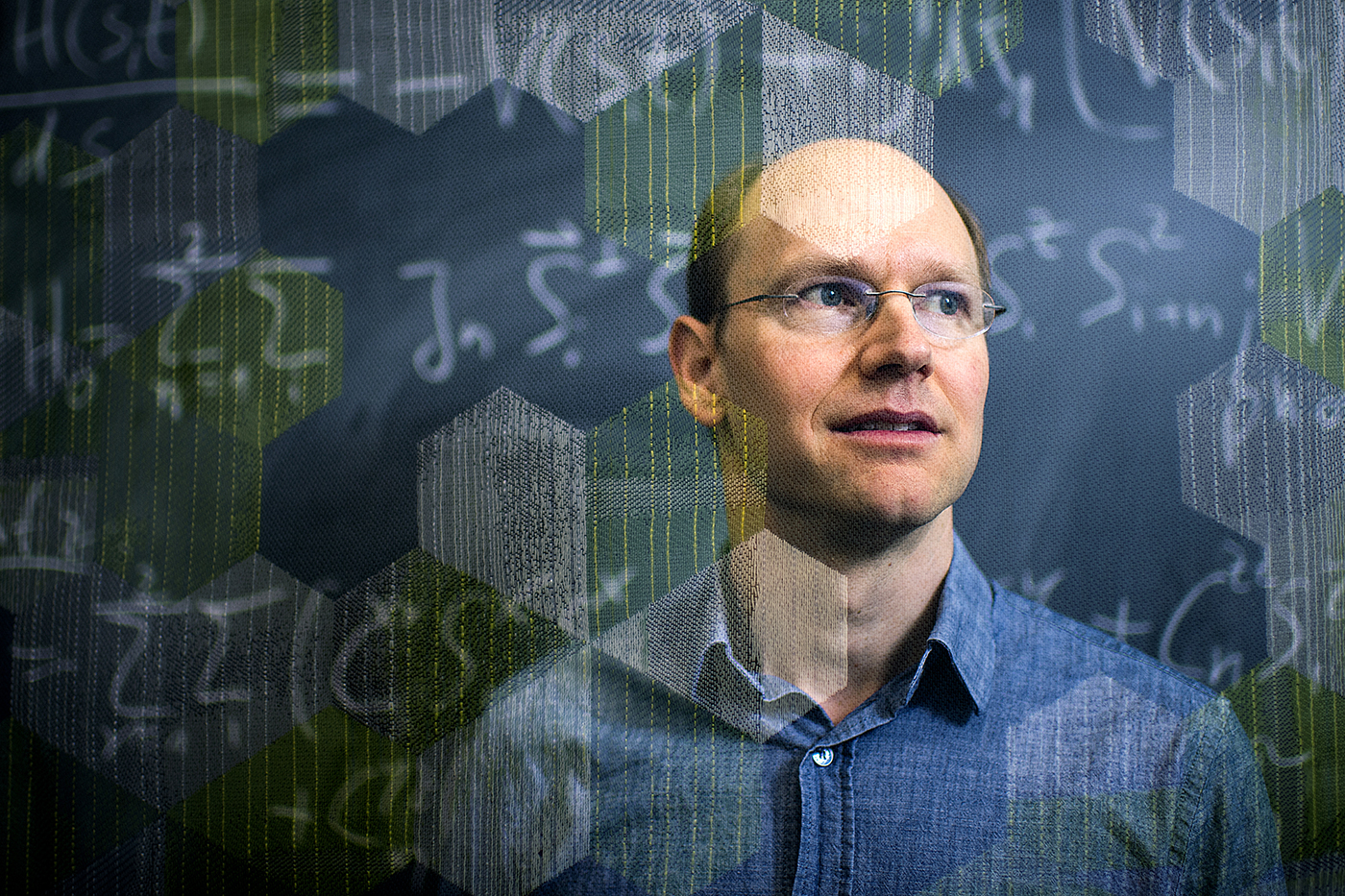Northeastern University physicists are helping to create faster computers and more powerful electric cars by changing the properties of materials found in everyday technology

Faster computers. More efficient solar panels. More powerful electric cars.
Researchers at Northeastern are helping to make these technological advances a reality. They are developing ways to change the electrical and magnetic properties of materials used to create circuits that power the electronics we use every day.

Lasers can be used to change the arrangement of electrons within a material, says physics professor Gregory Fiete. But predicting that change is complicated. Photo by Matthew Modoono/Northeastern University
“The kind of ideas that we’re exploring give us a way to get more out of a material,” says Gregory Fiete, a physics professor at Northeastern. “We could take materials that might be in common use in electronics, like silicon or gallium arsenide in your smartphone, and we can get them to do things that they don’t do right now.”
Materials such as silicon have helped researchers build reliable, low-cost, energy-efficient circuits to power our electronics. Physicists are working on the next advancements using new, more complex materials. In recent years, they have been able to change how these new materials conduct electricity or interact with light, among other things, by putting them near a strong magnet or connecting them to a battery. This has opened up new possibilities for engineering the next generation of electronics.
Now, Fiete and his doctoral student Michael Vogl have demonstrated a theoretical way to predictably alter these electrical and magnetic properties by shooting the material with a laser.
The characteristics of a material, including whether it is an effective conductor of electricity, depend on the arrangement of the electrons within it. A steady magnetic field or a current from a battery can change that arrangement. A laser can do the same thing, but it’s a little more complicated to predict. Lasers are well-organized waves of light; the electromagnetic fields that they create are constantly fluctuating.
“When the pulse of light moves through a material, it changes the properties of the material in a very dramatic way, and often on very short time scales,” Fiete says. “The work we’ve done helps us understand what kind of pulse we should use to get certain desired effects.”
The ever-changing nature of light can also help physicists shift the materials into new states that can’t be accessed by other methods. Some of these new states might make a material more sensitive to electric or magnetic fields, which could be used to improve medical technology and security sensors. Others might make it more efficient at carrying information, which could be used to speed up internet connections.
“What we do in my community is try to understand the basic principles that nature operates by,” Fiete says. “Then those principles are picked up by, say, electrical engineers that want to use them to build a sensing device or a communications device. It spreads upward and outward to many different sectors.”
For media inquiries, please contact Mike Woeste at m.woeste@northeastern.edu or 617-373-5718.





